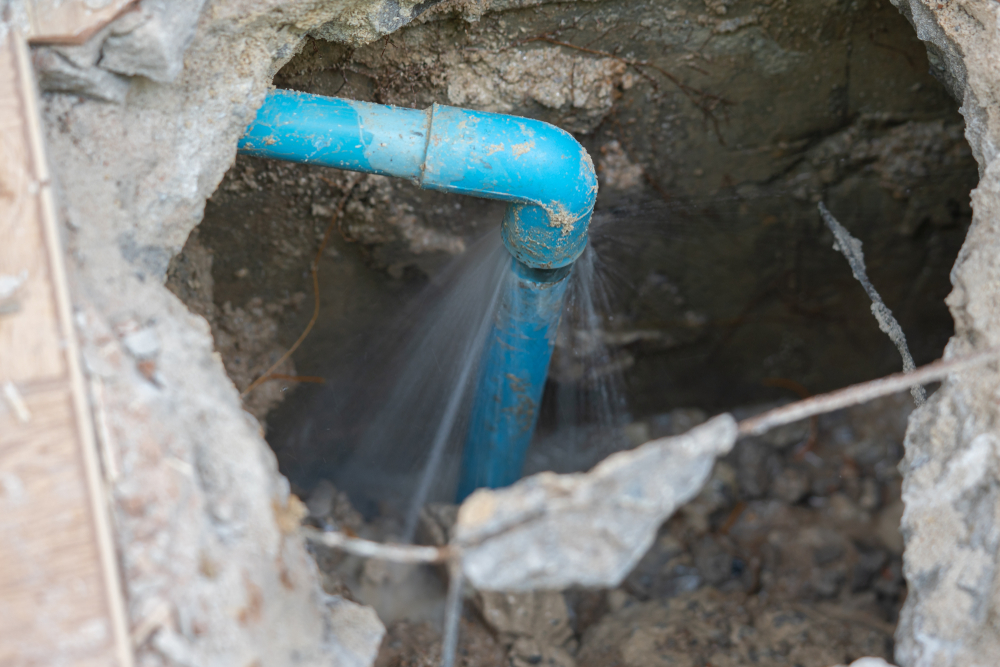Just about everyone maintains their personal piece of advice with regards to Locating water leaks.

Early discovery of dripping water lines can reduce a possible calamity. Some small water leaks might not be visible.
1. Check Out the Water Meter
Examining it is a proven way that helps you discover leaks. If it moves, that indicates a fast-moving leakage. This indicates you might have a slow-moving leakage that can also be below ground.
2. Check Water Consumption
Assess your water expenses and track your water intake. As the one paying it, you need to observe if there are any type of inconsistencies. If you find sudden changes, regardless of your usage being the same, it suggests that you have leakages in your plumbing system. Bear in mind, your water bill need to drop under the exact same variety monthly. A sudden spike in your costs shows a fast-moving leak.
At the same time, a consistent increase each month, even with the very same habits, reveals you have a slow-moving leak that's likewise slowly rising. Call a plumber to completely examine your residential or commercial property, especially if you really feel a cozy area on your floor with piping underneath.
3. Do a Food Coloring Test
30% comes from toilets when it comes to water usage. Test to see if they are running properly. Decrease specks of food color in the container and wait 10 minutes. There's a leakage between the storage tank and also bowl if the shade in some way infiltrates your bowl during that time without flushing.
4. Asses Exterior Lines
Do not fail to remember to inspect your exterior water lines also. Examination faucets by attaching a garden pipe. Needs to water leak out of the connection, you have a loosened rubber gasket. Replace this and guarantee all connections are limited. If you have actually got a sprinkler system, it will help get it expertly examined as well as preserved every year. One tiny leak can throw away lots of water and also surge your water costs.
5. Inspect and Evaluate the Scenario
Home owners should make it a routine to inspect under the sink counters as well as also inside cupboards for any type of bad odor or mold development. These 2 red flags indicate a leakage so punctual focus is required. Doing routine assessments, even bi-annually, can save you from a significant issue.
Extra notably, if you recognize your house is already old, keep a watchful eye on your heaters, hoses, pipelines and so on. Check for stainings and also weakening as the majority of home appliances as well as pipelines have a life span. They will certainly additionally naturally weaken due to tear and wear. Don't wait for it to escalate if you think leaking water lines in your plumbing system. Call a specialist plumber today so you do not end up with a terrible mess in your home.
Early discovery of leaking water lines can minimize a potential disaster. Some small water leakages may not be visible. Examining it is a surefire method that aids you discover leaks. One little leakage can waste heaps of water and also spike your water bill.
If you believe leaking water lines in your plumbing system, don't wait for it to escalate.
WARNING SIGNS OF WATER LEAKAGE BEHIND THE WALL
PERSISTENT MUSTY ODORS
As water slowly drips from a leaky pipe inside the wall, flooring and sheetrock stay damp and develop an odor similar to wet cardboard. It generates a musty smell that can help you find hidden leaks.
MOLD IN UNUSUAL AREAS
Mold usually grows in wet areas like kitchens, baths and laundry rooms. If you spot the stuff on walls or baseboards in other rooms of the house, it’s a good indicator of undetected water leaks.
STAINS THAT GROW
When mold thrives around a leaky pipe, it sometimes takes hold on the inside surface of the affected wall. A growing stain on otherwise clean sheetrock is often your sign of a hidden plumbing problem.
PEELING OR BUBBLING WALLPAPER / PAINT
This clue is easy to miss in rooms that don’t get much use. When you see wallpaper separating along seams or paint bubbling or flaking off the wall, blame sheetrock that stays wet because of an undetected leak.
BUCKLED CEILINGS AND STAINED FLOORS
If ceilings or floors in bathrooms, kitchens or laundry areas develop structural problems, don’t rule out constant damp inside the walls. Wet sheetrock can affect adjacent framing, flooring and ceilings.
https://www.servicemasterbyzaba.com/blog/how-to-detect-water-leakage-in-walls/

I was made aware of that write-up on Detecting hidden plumbing leaks from a good friend on another web page. Be sure to take the time to distribute this blog entry if you appreciated it. Thank you so much for your time spent reading it.
 Mr. T Then & Now!
Mr. T Then & Now! Shaun Weiss Then & Now!
Shaun Weiss Then & Now! Patrick Renna Then & Now!
Patrick Renna Then & Now! Talia Balsam Then & Now!
Talia Balsam Then & Now! Phoebe Cates Then & Now!
Phoebe Cates Then & Now!